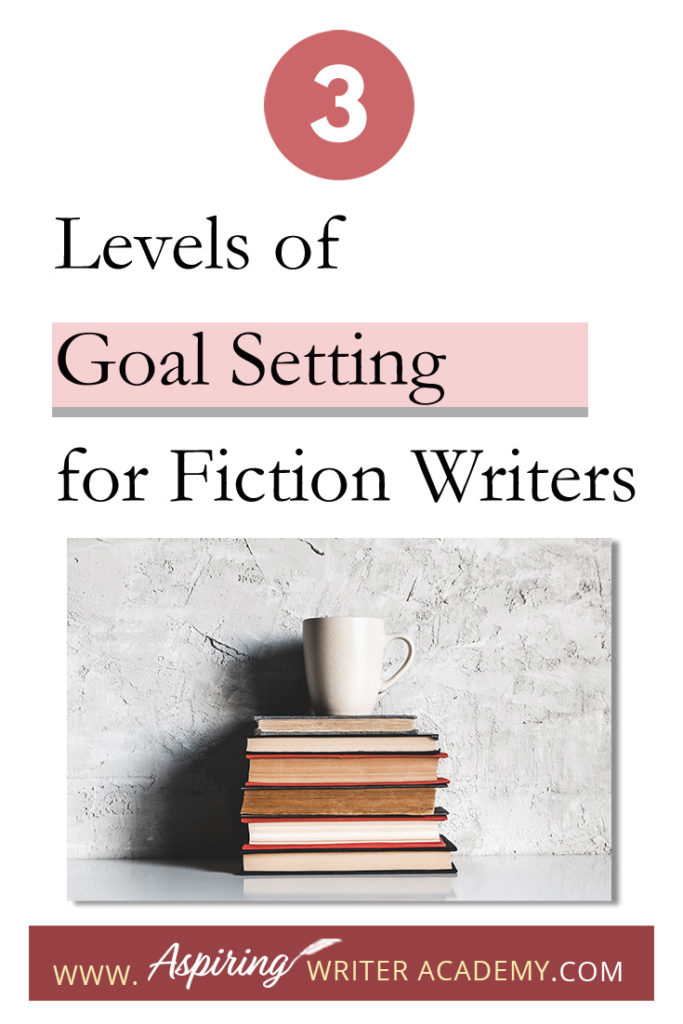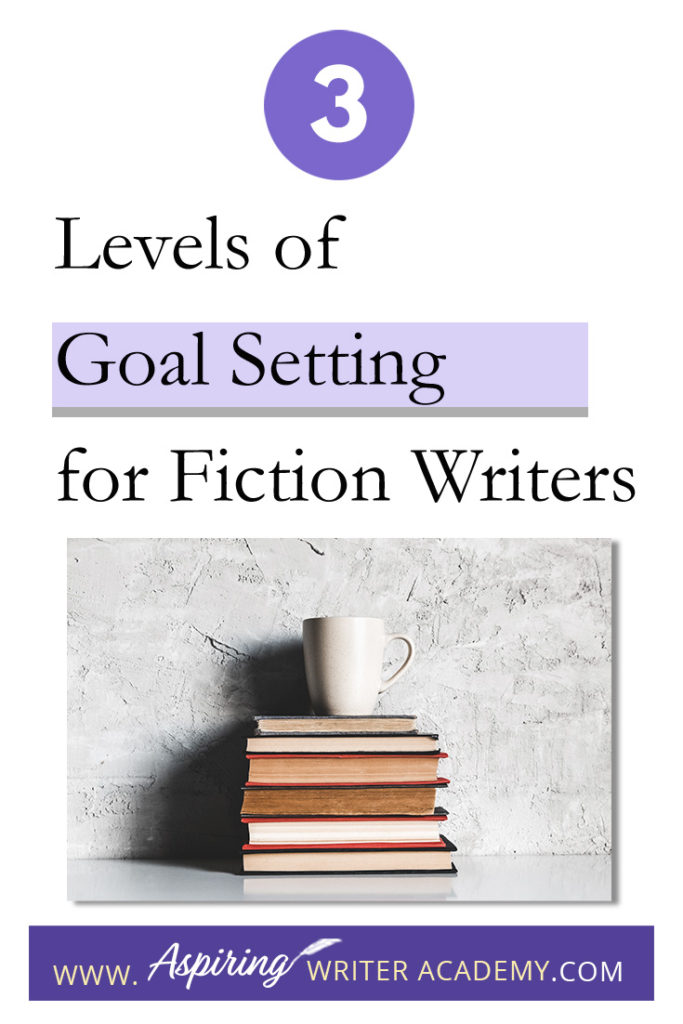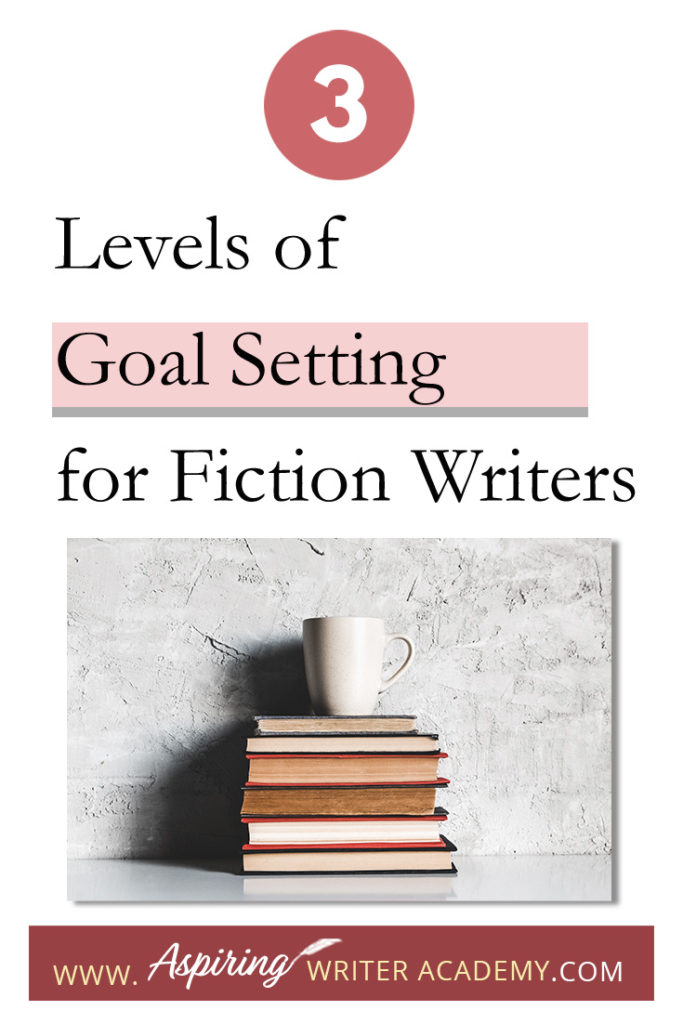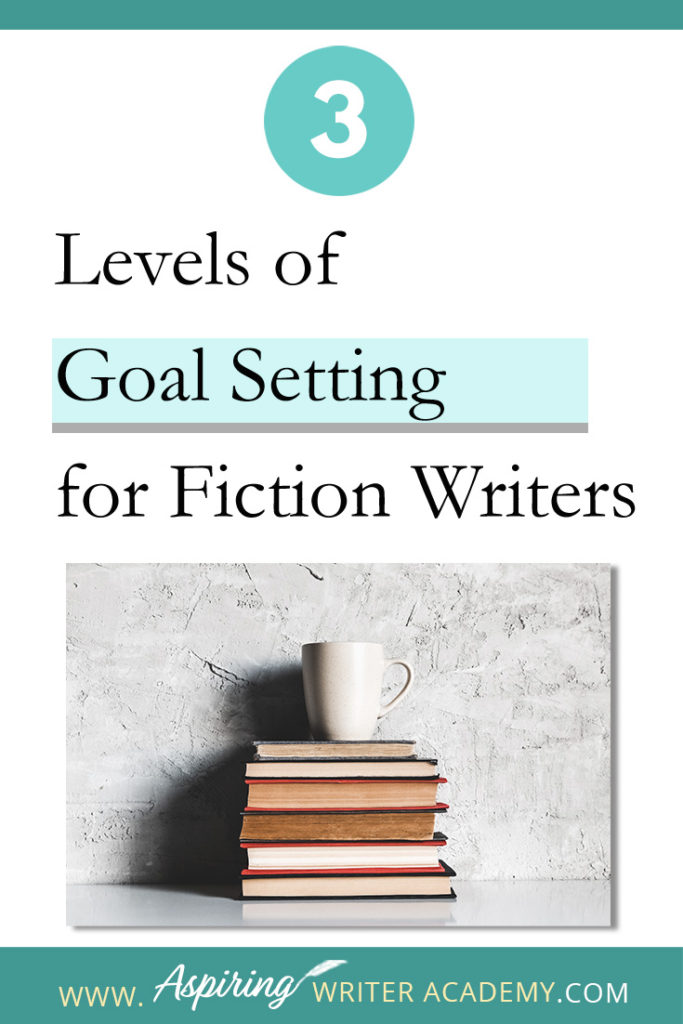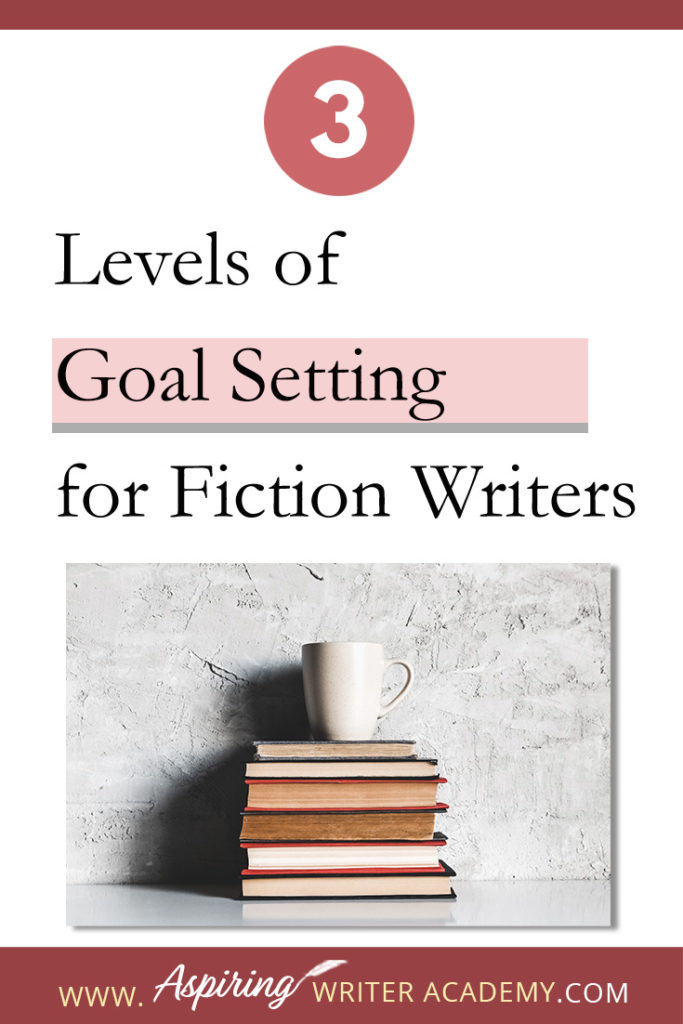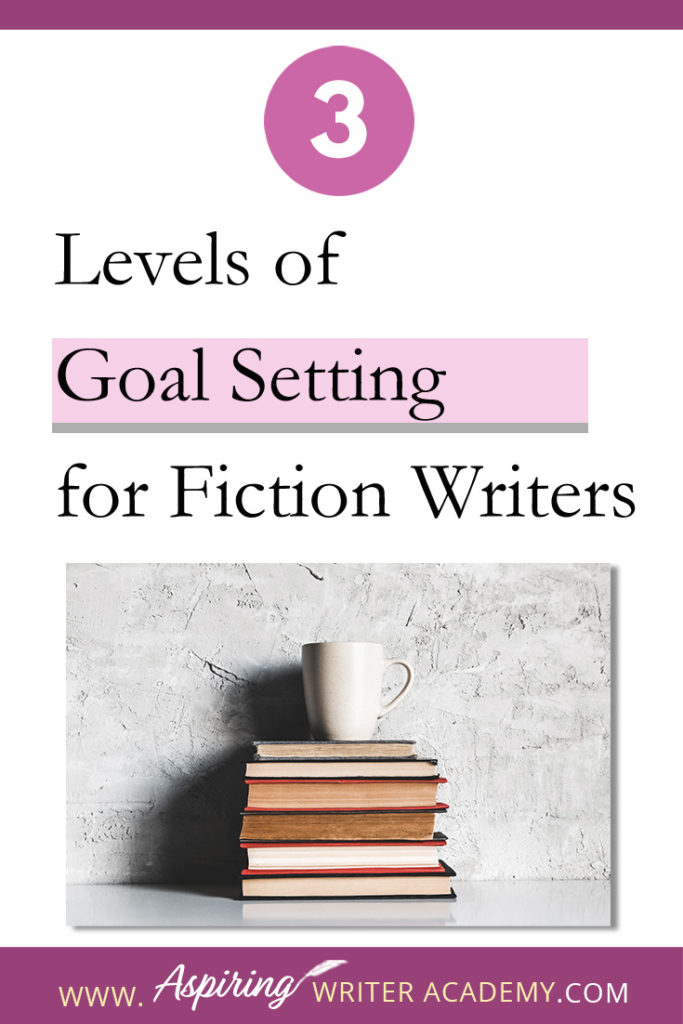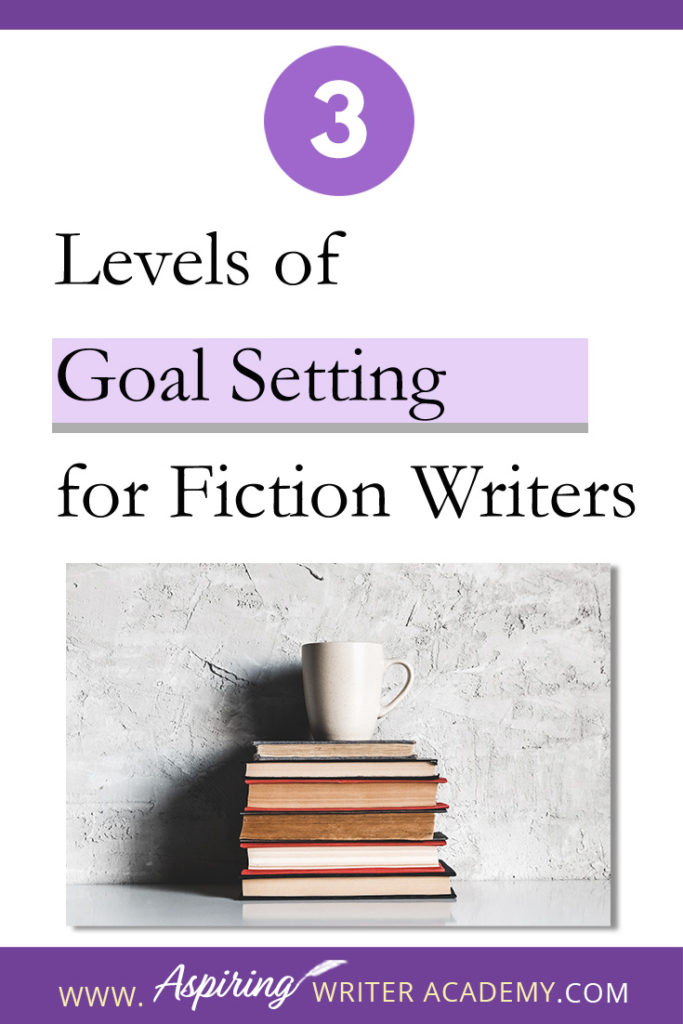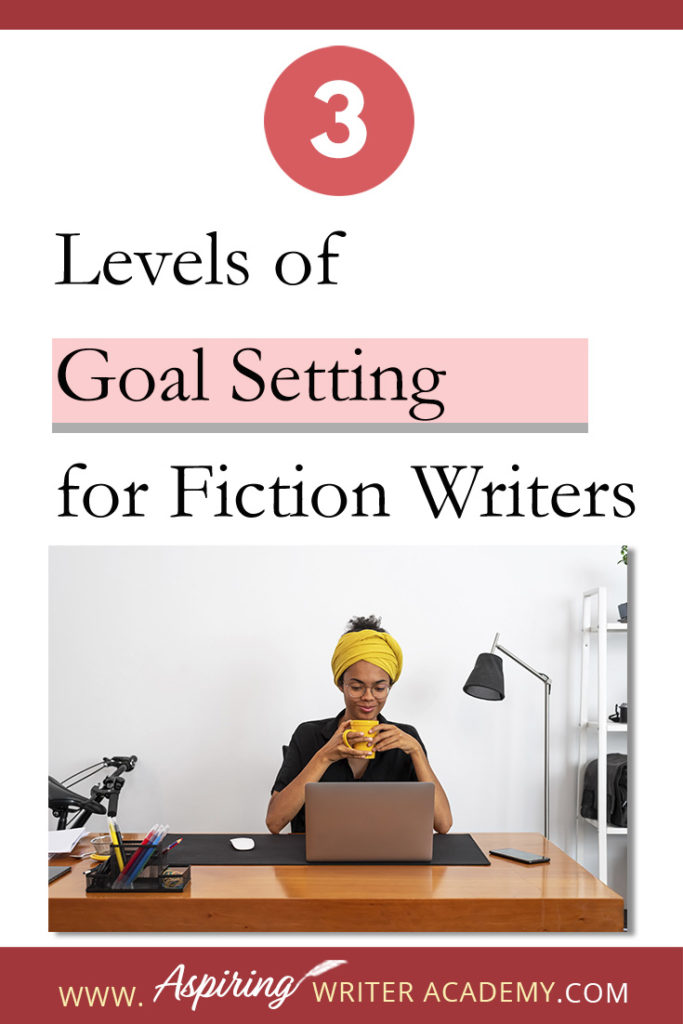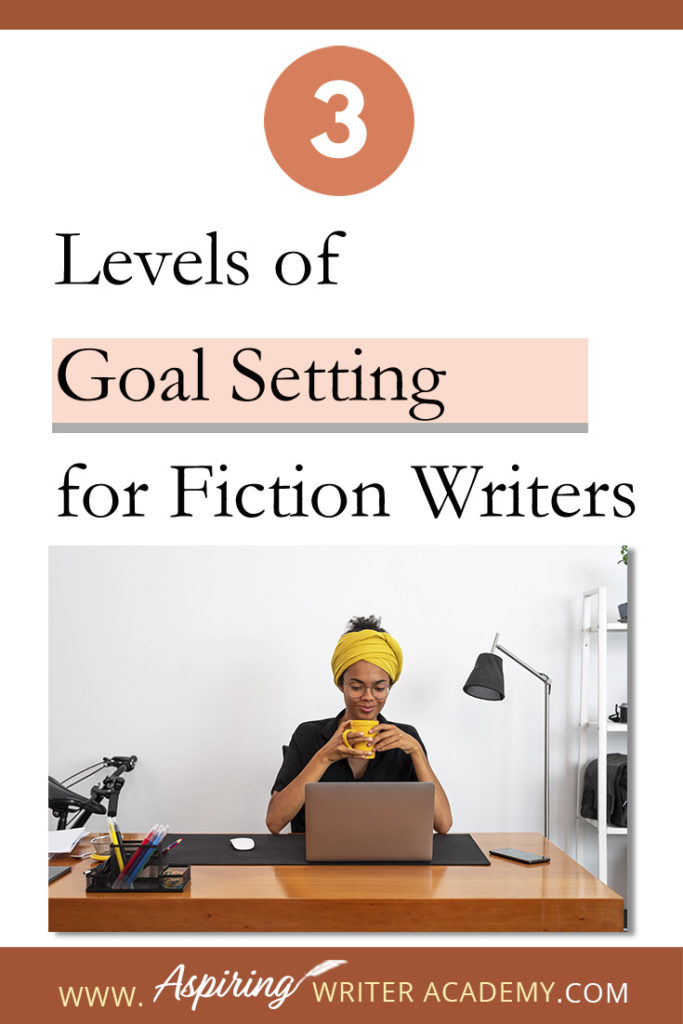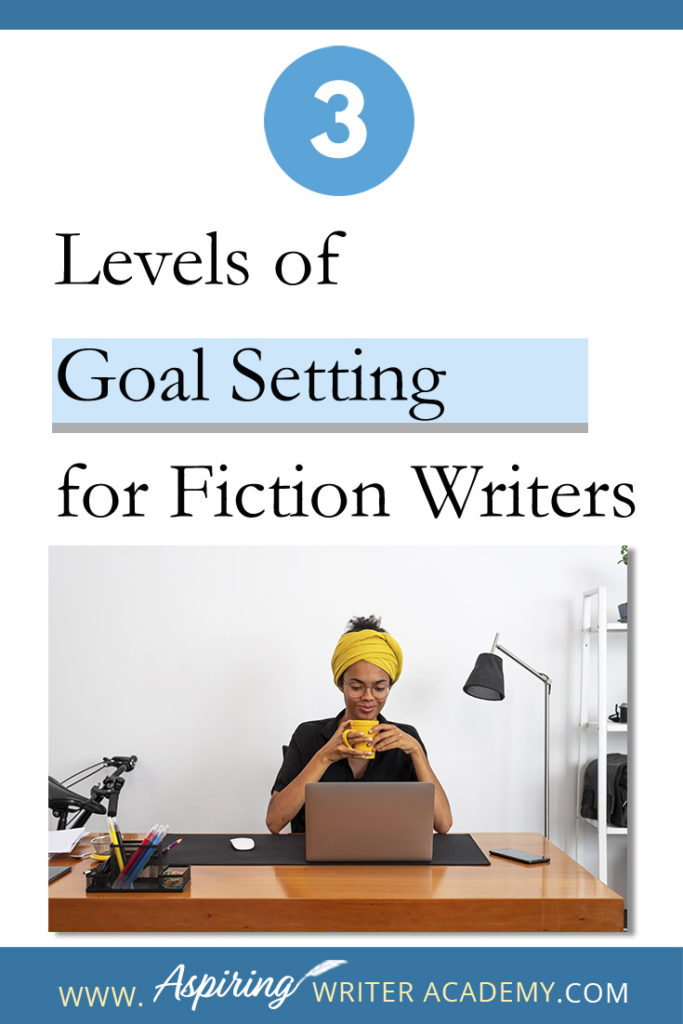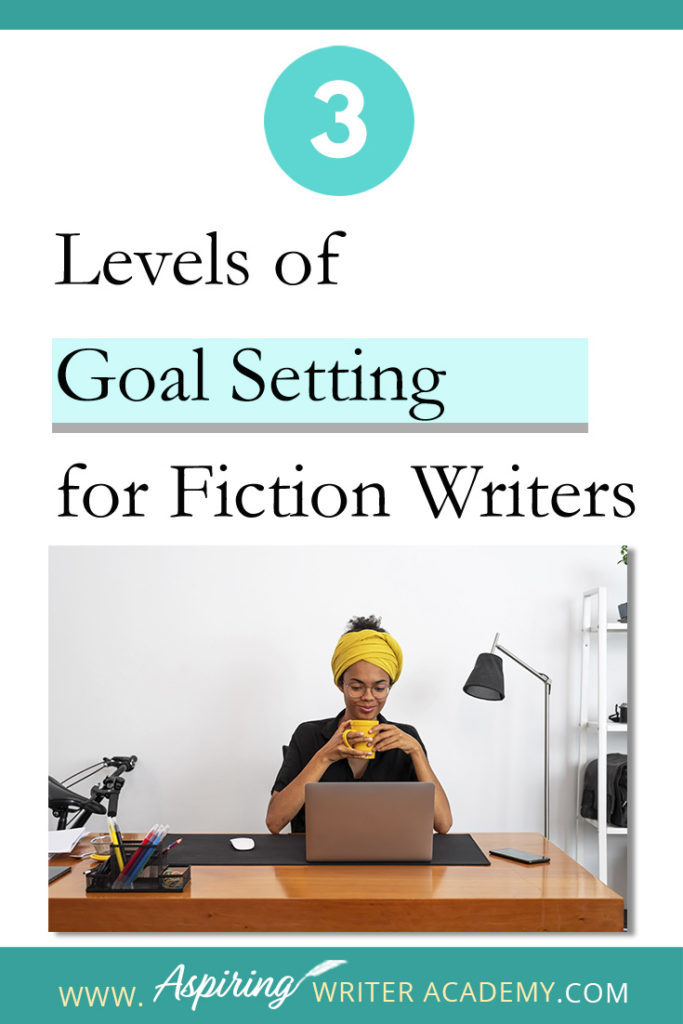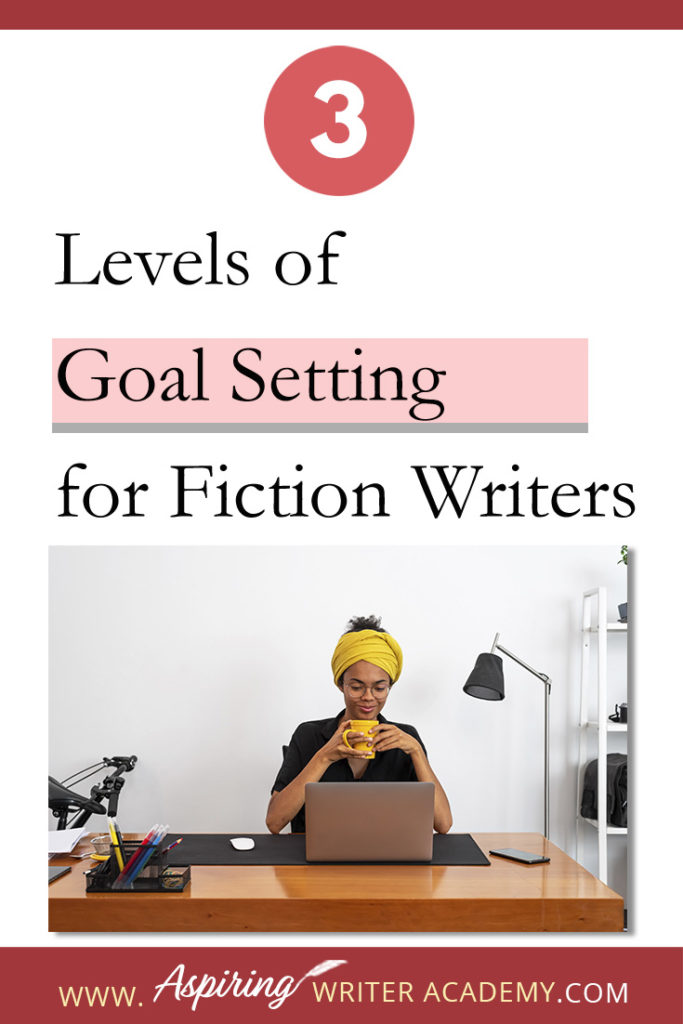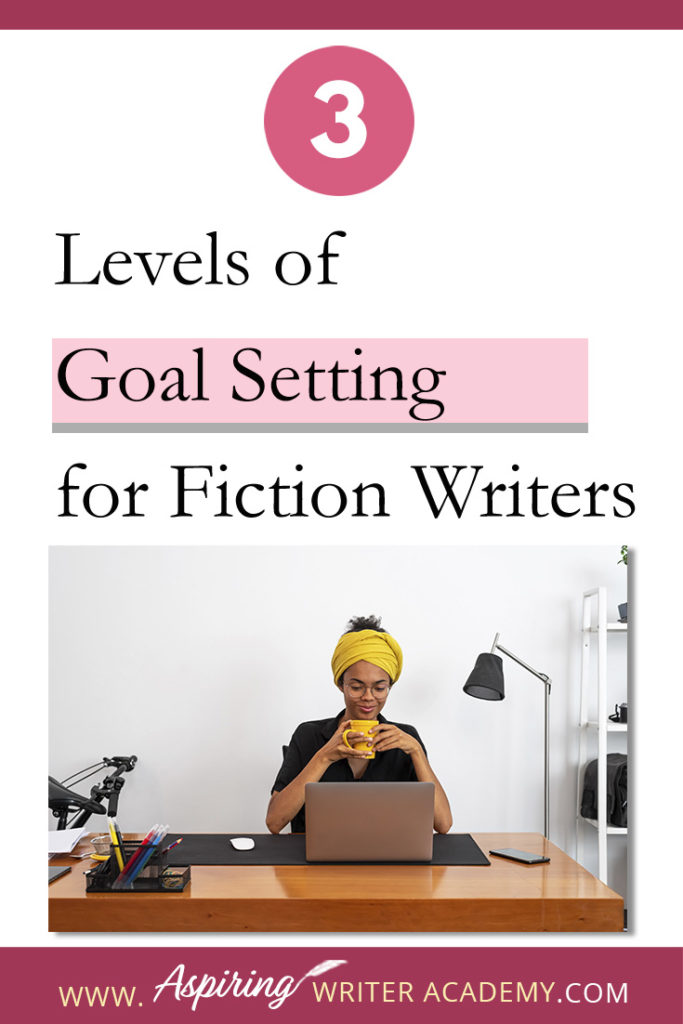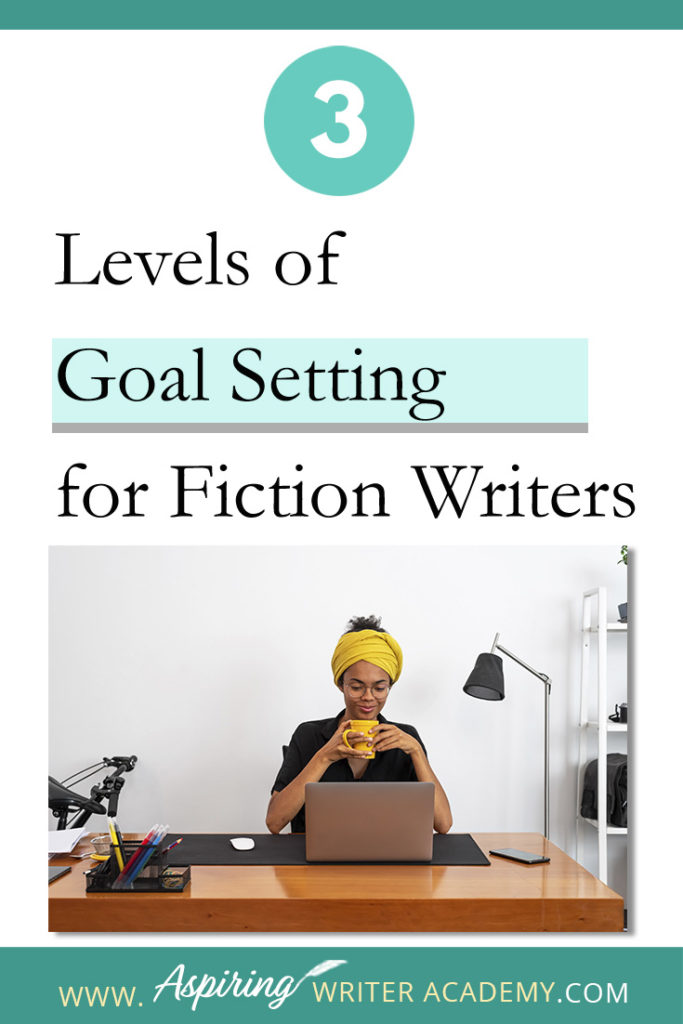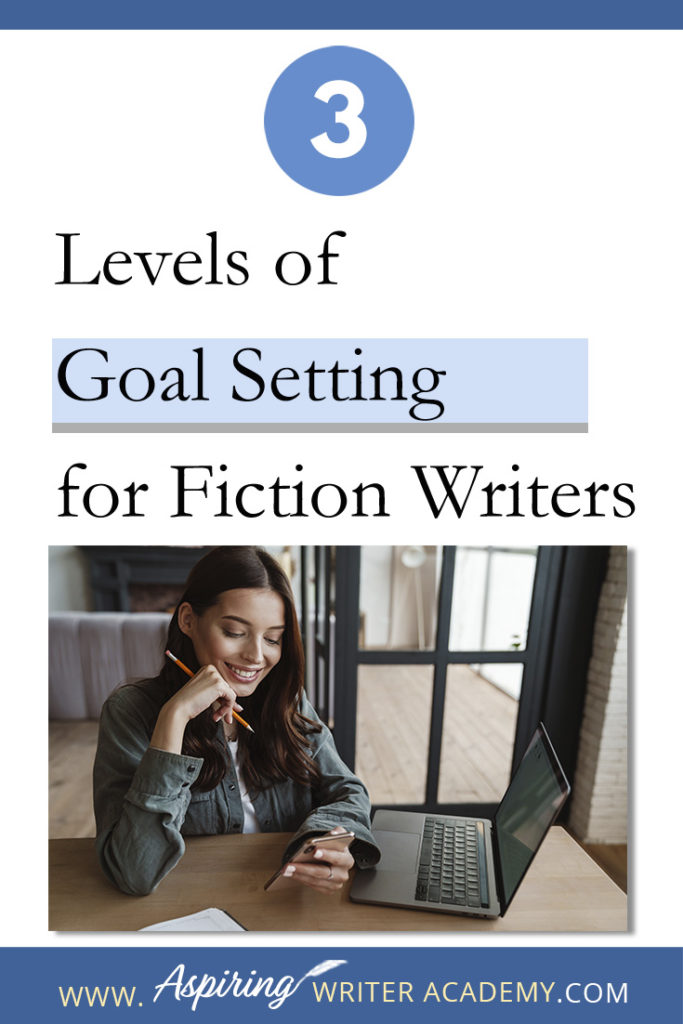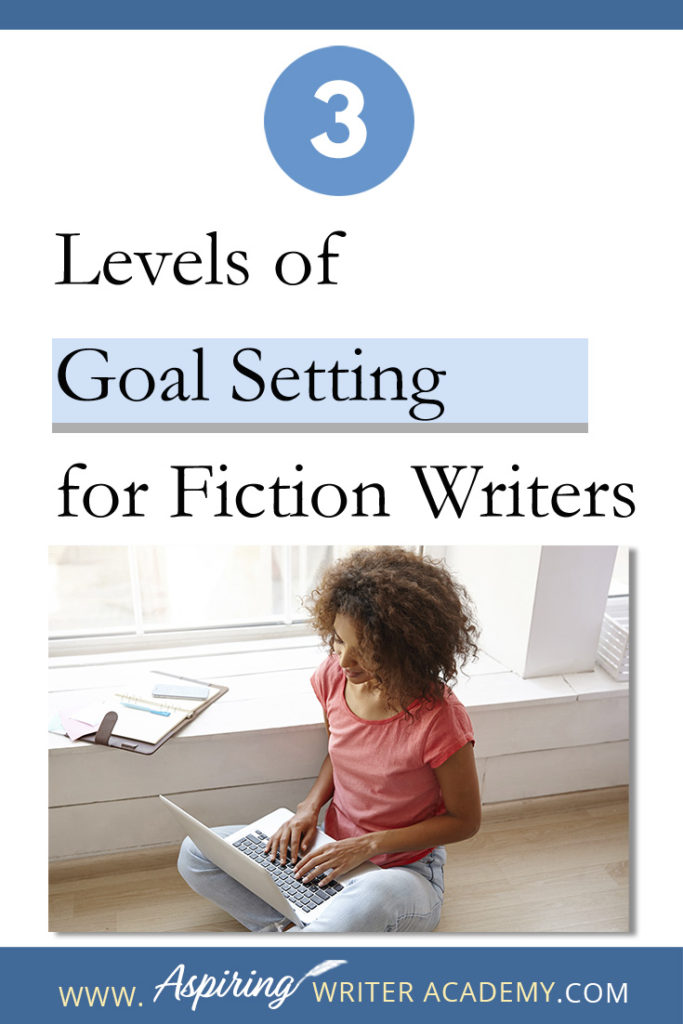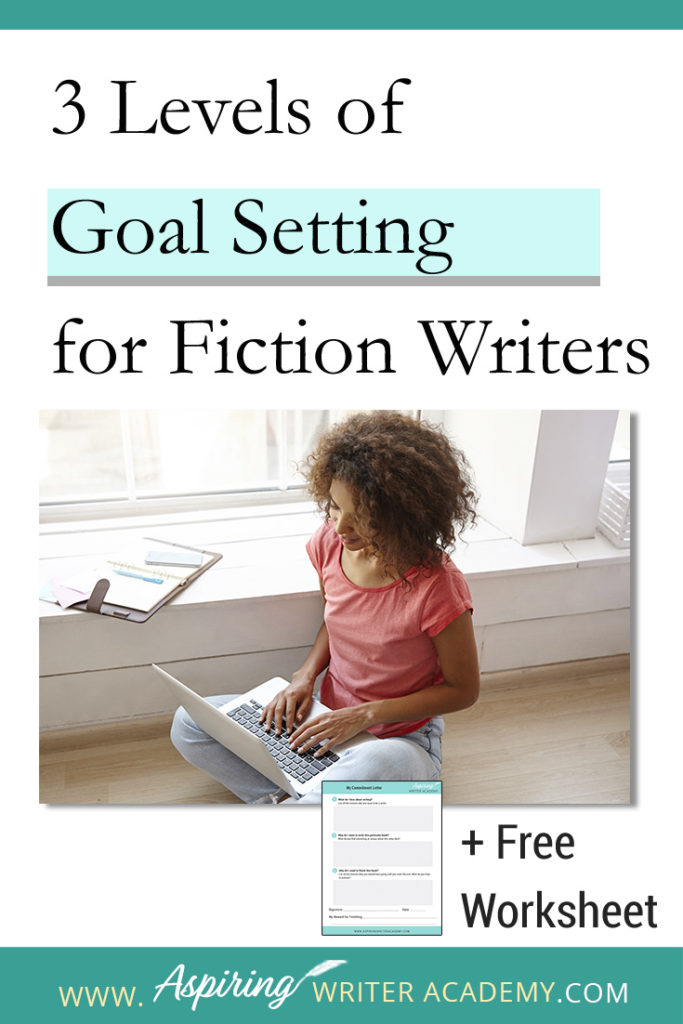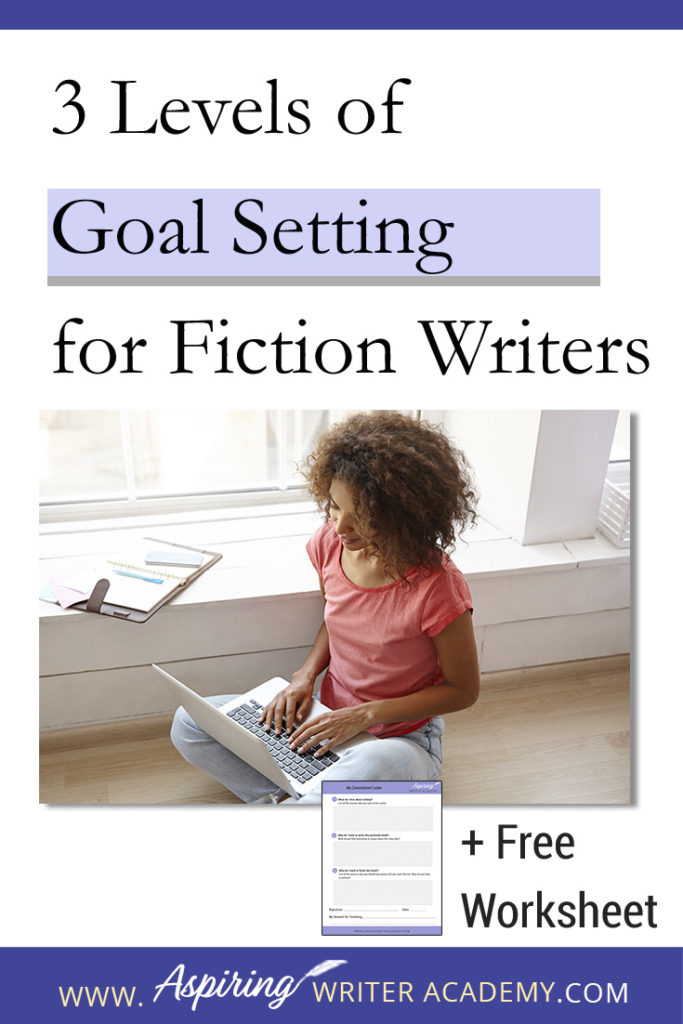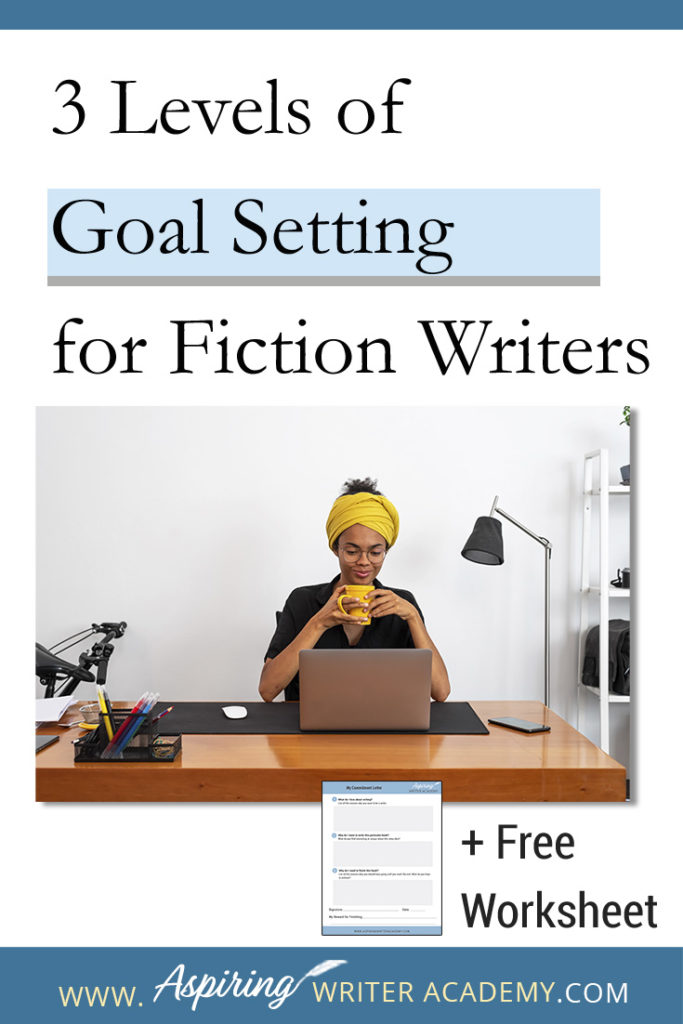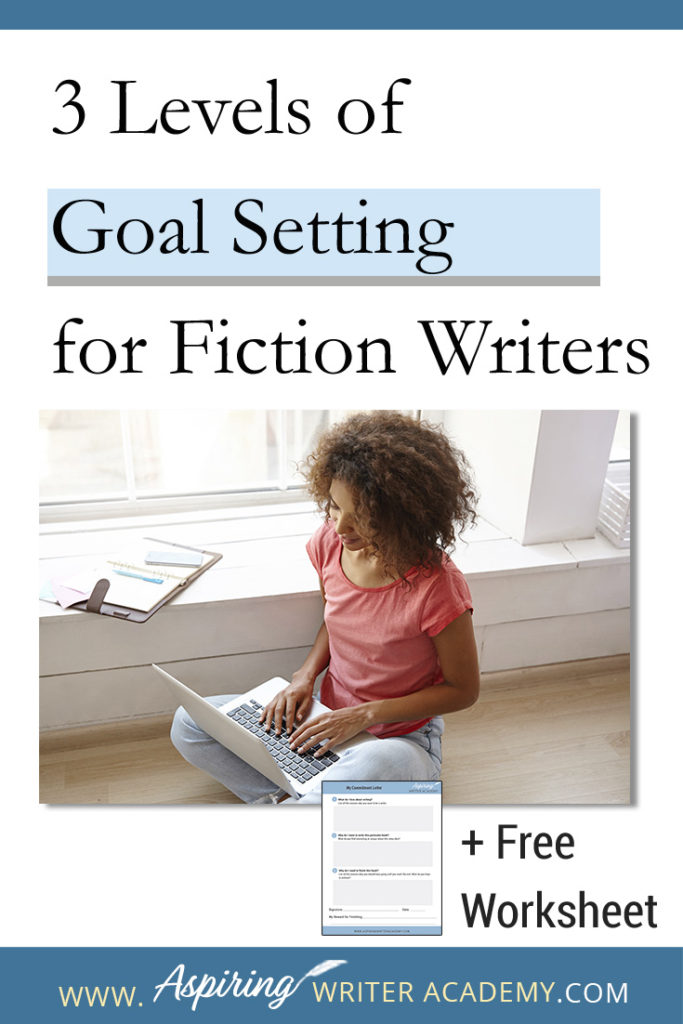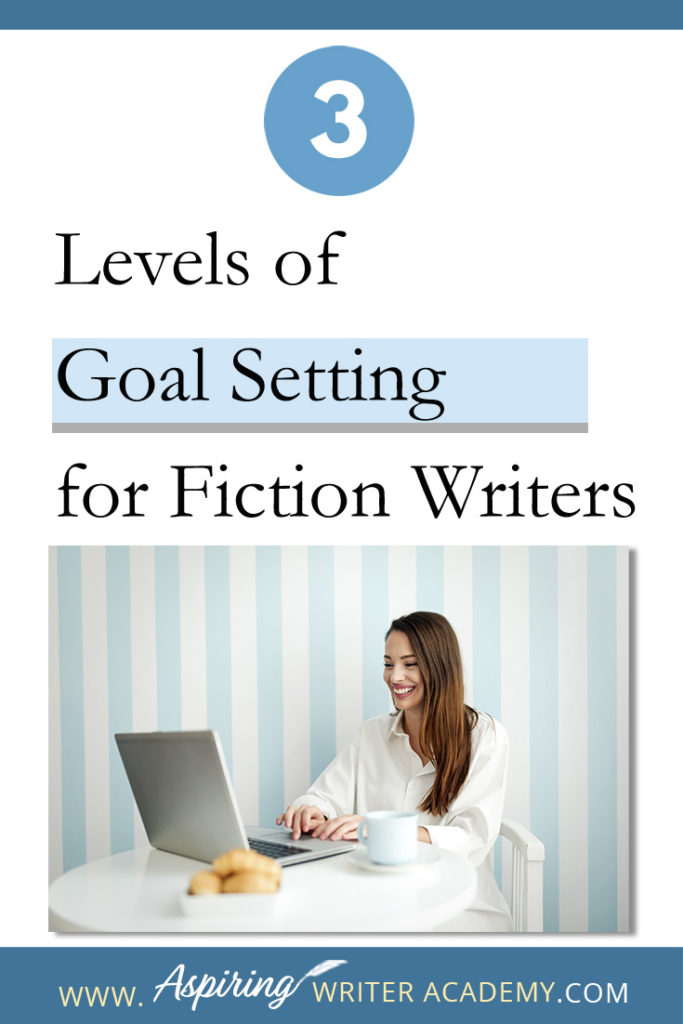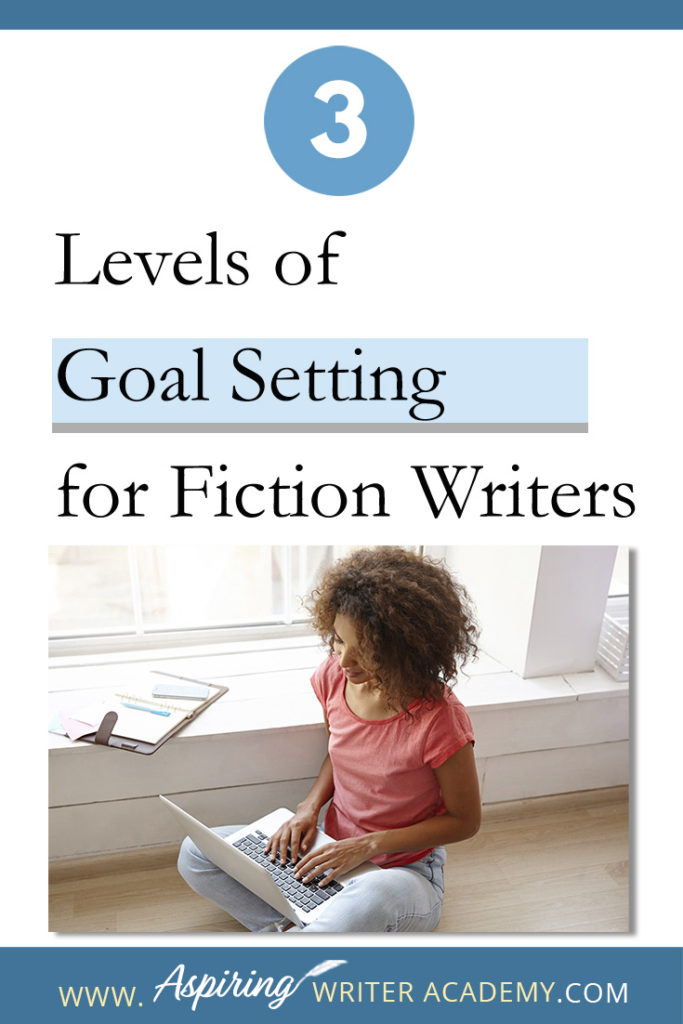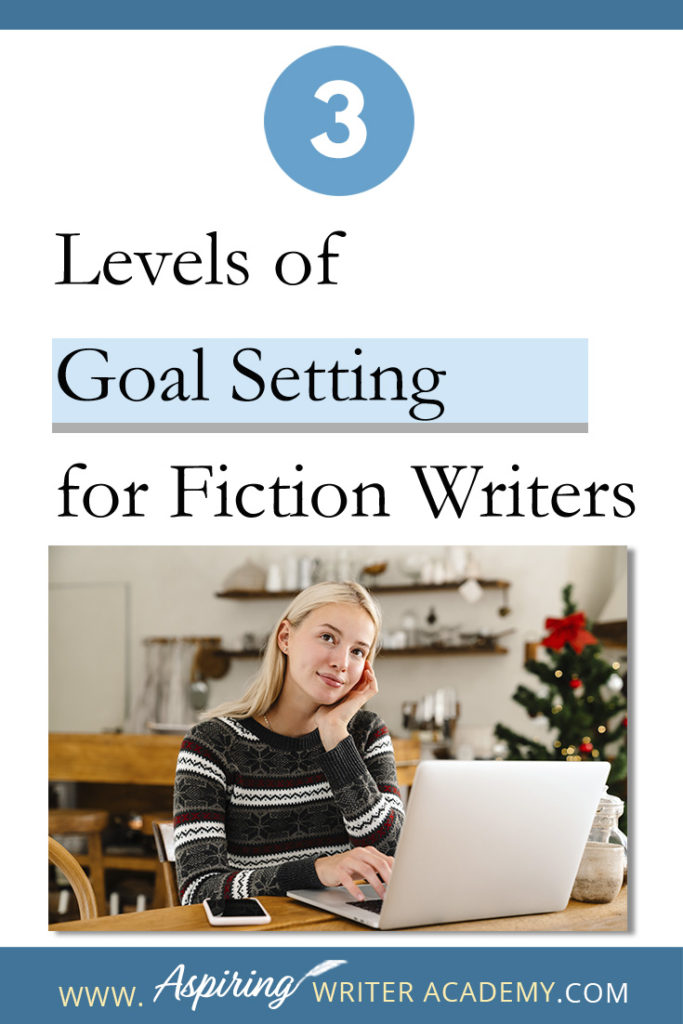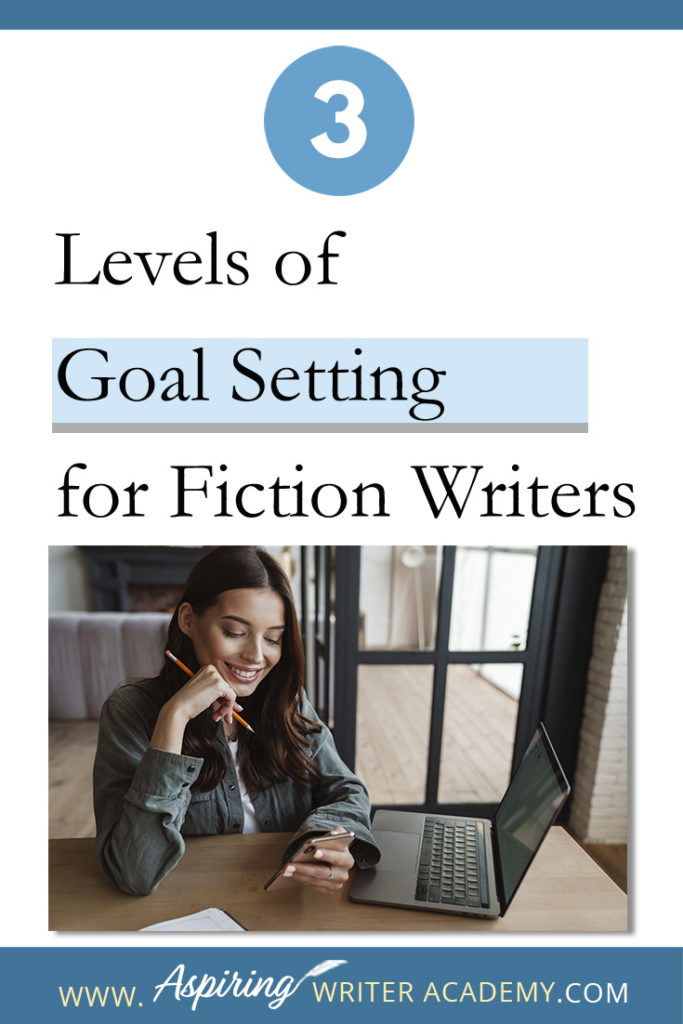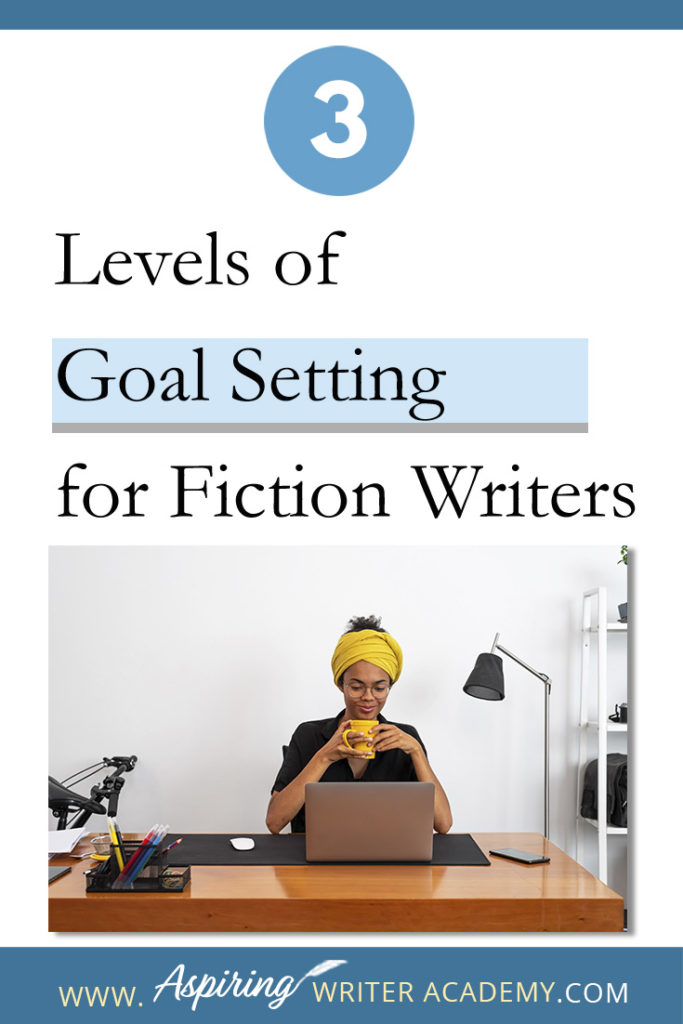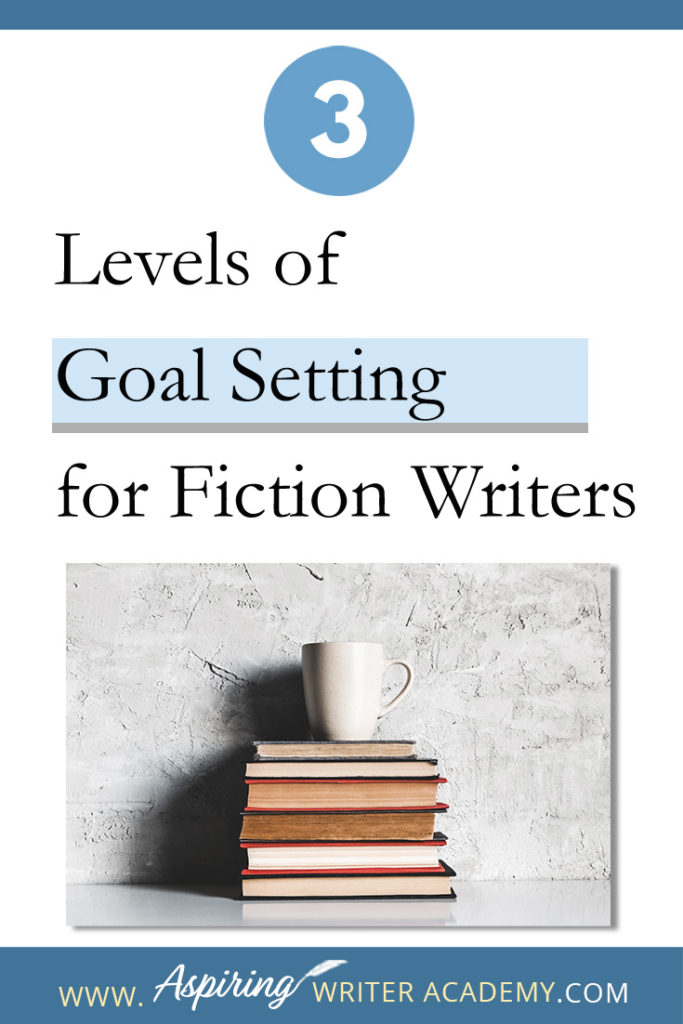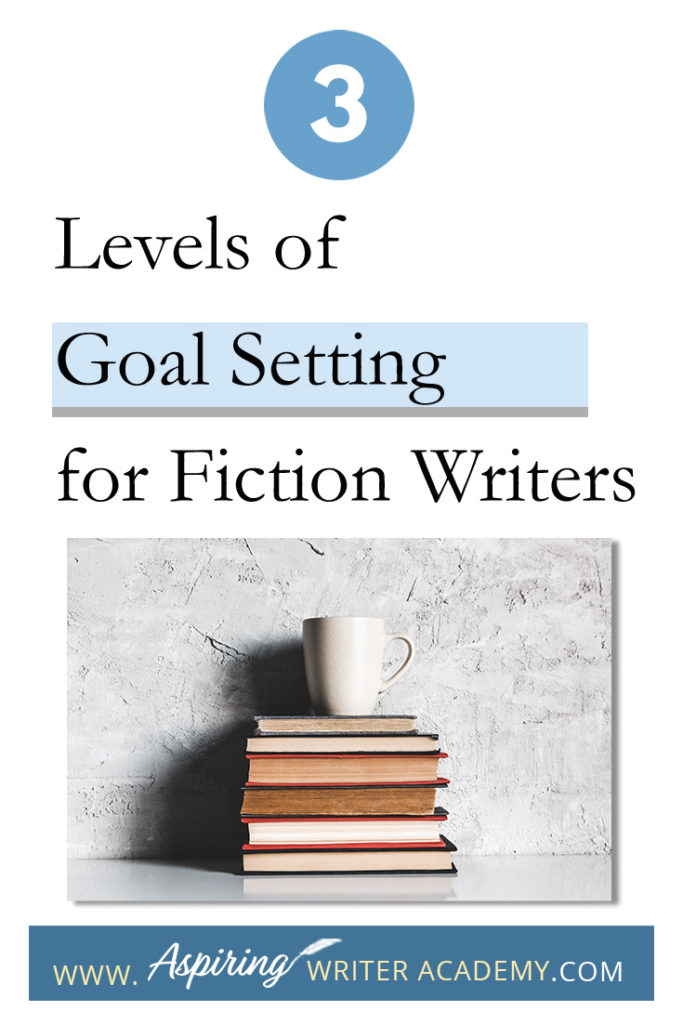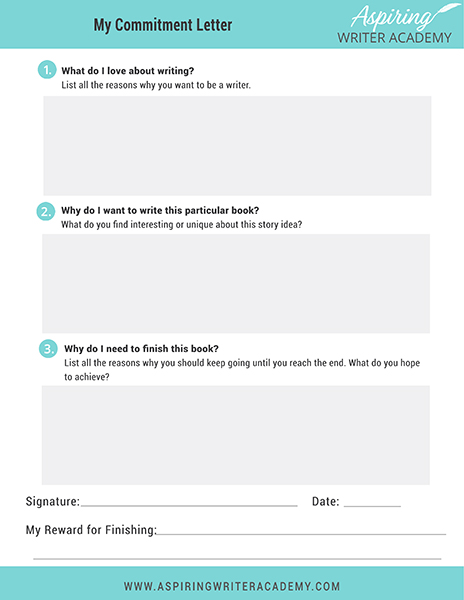3 Levels of Goal Setting for Fiction Writers

Before you sit down to write a book, set yourself up for success by getting clear on what you hope to achieve.
Why do you want to be a writer? Do you have a career plan? What is the purpose for your story? Are your character’s goals strong enough to impact readers?
In the post below, we show you how to set S.M.A.R.T. goals on three distinct levels:
- Goals for your writing career
- Goals for your story
- Goals for your fictional characters

1) Goals for Your Writing Career
First let’s ponder some questions. Why do you want to be a writer? What inspires your passion to write? Writing is not an easy task and when the going gets tough it is helpful to know why you started writing your book in the first place. When I privately mentor students, one of the first things I have them do is write themselves a letter listing all the reasons they need to finish their book. You can do this too.
Exercise:
Take out a sheet of paper and write yourself a letter listing everything you love about writing, why you want to write this particular book, and all the reasons that you should keep going until you reach ‘the end.’
What is your motivation? Your ‘why?’ How will your life change after this book is written? Will writing this book boost your confidence? Do you hope it will lead to a publishing contract or help you to provide a second income for your family?
“I need to finish this book so that…” Fill in the blank.
Sign the bottom, as if signing a contract with yourself. Then put the letter in an envelope and place it in the front of your writer notebook, story binder, or someplace where you can review your ‘why’ on a regular basis. You can also pull this letter out and read it every time you feel like quitting, doubt your ability, or hit a roadblock. Perhaps even ‘writer’s block.’ If life throws you for a loop or if you come across a scene that just isn’t working, pull out the letter and remind yourself why you need to persevere and continue on. You committed to writing this story and you need to finish. “You’ve got this!”
Next, you need to create a roadmap or blueprint to keep you on track detailing what you need to do by when. This can be accomplished using the S.M.A.R.T. goal system.
What are S.M.A.R.T. goals?
S = Specific, detailed, pin-pointed, targeted, distinct, not vague
M = Measurable, incremental, so we know when each step toward the goal is reached
A = Actionable, the goal requires a series of smaller achievable steps
R = Risky & Relevant & Realistic / the goal should not be easy and should require a certain amount of risk to achieve. The goal should challenge you to stretch yourself, grow, overcome obstacles. The goal should also be relevant. Set writing goals that reflect who you are as a person and what you want to do with your life. They should also be realistic. (You can’t write 20 books in one year if you work full time, homeschool 6 kids, and volunteer 3 hours a day for a community organization, unless you are a superhero.)
T = Timebound, meaning the goal has a deadline, a ticking clock.
An author may want to use S.M.A.R.T. goals to map out a career plan.
Exercise:
Start by taking a hard look at where you are at right now. Be honest. What is holding you back? What do you need to get better at? What new skills do you need to learn?
Then look to the future and get specific. Ask—Where do you want to be in five years? Do you want to have five books written? Ten? Do you want to have your books published? Do you want to work with an agent? How much money do you hope to make? How many subscribers do you wish to have on your author newsletter email list?
Now, connect those two realities by listing on post-it notes or on a dry-erase board what has to happen to get yourself from where you are now to where you want to be. What small actionable, achievable steps can you take?
Better yet, pretend it is one year from today. Where do you want to be in one year? Immerse yourself in that vision. Feel it. Now chain backwards and list monthly what you must do to make that dream happen. How many pages do you need to write? How many chapters of your story? What actionable, measurable steps will you need to take?
If you want to write a 300-page novel in 10 months, you need to write 30 pages a month, which equals about 1 page a day. Of course, you will also want to make allowances in your calendar for vacation days, days off, and sick days. Some authors also find it challenging to write during the holidays. You might also need extra time for revisions and final edits.
Remember, you must also balance your writing life with your personal life. If you try to write 14 hours a day seven days a week, you will likely burn out or frustrate family and friends who you have chosen to ignore. What deadline can you give yourself that is challenging yet also realistic? How many pages per day should you really be writing to finish your novel within the anticipated timeframe?
An aspiring writer can also use this same technique to create a career plan, build an author platform, a promotion plan, etc.
What specific, measurable, actionable, risky/relevant, timebound steps can you take to get from where you are to where you want to be?
What books do you need to read? What courses do you need to take? Who do you need to contact? Which agents or editors do you need to pitch your story to at conferences? Which publishers do you need to submit to?
How are you going to get from here to there? Make a plan and set goals!
And remember, consistent small actions add up to big rewards!

2) Goals for your story
The second level of goals you need to look at concerns the individual project that you are taking on. This could include writing a book, building an author platform or an author brand, or creating a blog. However, for now, we will suppose you are writing a book.
Why do you want to write this particular book? What point do you want to make with this story? Who you are as a writer should also tie in with the subjects and themes that you tie into your stories, as well as your other projects.
So, who are you? What are you passionate about? What do you stand for? What are your core values? Which themes do you embrace?
Your goal for your book should also be Specific, Measurable, Actionable, Realistic, and Timebound:
Specific: You may decide to write a 400-page book on the Civil War to highlight the diversity between the people living in the North and South parts of the United States during that time. This is the overall specific purpose for writing the story.
Measurable: As an author, you would not want to wait until the end of the story to preach about diversity. Instead, you would need to thread this theme into the various chapters in small increments so that together, the message that you are trying to convey would have a stronger, more compelling impact on the reader by the book’s end.
Actionable: You may decide to include at least one scene per chapter which highlights a different aspect of the diversity you want to highlight within the story. Each ‘step’ will help paint a broader picture.
Realistic: Instead of portraying every aspect of diversity that could possibly be imagined, it might be best to choose just a handful of specific aspects that you would like to highlight, aspects that you can cohesively tie in with one another. To add another ‘R’ for ‘Relevant,’ you may also choose to show how this theme ties into the reader’s life and the world in which we live today. This gives the story meaning, value.
Timebound: If your book has 400 pages, then you need to get your message across to the reader in a timely manner before the book ends. Your time is limited. Pace yourself.
(Other stories might contain a theme of forgiveness, or faithfulness, or fighting for truth or justice, or etc. but whatever theme you choose, introduce it in the same manner. And if you are an author who writes books simply to entertain? You too can use the S.M.A.R.T. goal system to plan how you can specifically create a story that serves to entertain the reader by book’s end.)

3) Goals for Your Fictional Characters
Just like the goals that you set for yourself, and for your writing project, you must now narrow it down further and set S.M.A.R.T. goals for the individuals in your story.
What do your characters want? Specifically?
A character who enters the story desiring to live a happy life does not have a story-worthy goal. Their goal needs to be big enough to take the whole book to achieve, strong enough to make the reader care, and complicated enough to allow the character to break the challenge down into bite-sized achievable steps.
Example:
Anna Smith, a talented seamstress, books passage aboard a steamship sailing from Boston to San Francisco during the California Gold Rush and is determined to make five hundred dollars from mending the miner’s shirts by Christmas Eve so she can buy her own ranch.
Is this specific? Yes.
Does it require a series of steps that can show us how she is progressing? Yes.
Is the plan actionable? Yes, each step in the plan requires the heroine to take action.
Is it a little risky? Certainly, there are many things that could go wrong which may require the heroine to learn new skills to overcome. This helps ramp up the story tension.
Is the goal relevant? The goal should also be relevant to the plot and the obstacles the antagonist is forcing the character to try and overcome. Perhaps at the beginning of the story, her antagonist father vowed to marry the heroine off to an ugly old man if she cannot find a way to support herself. A woman trying to support herself may also be relevant to a female reader who is also trying to provide for herself and her family.
Is the goal timebound? Yes, she must find a way to support herself by Christmas Eve or perhaps her father will force her to marry or perhaps the ranch of her dreams will no longer be available to her. The goal has a deadline before disaster strikes or the character fails.
I hope you have enjoyed 3 Levels of Goal Setting for Fiction Writers.
Much like a blueprint, roadmap, or calendar to keep you on track, having a specific plan for your career, your story, and your characters helps you see where you are going so you do not end up stressed-out, stuck, sidetracked, or ‘lost.’
Don’t be one of those writers who merely wishes to ‘write a book someday.’
Instead, make a commitment right now to set S.M.A.R.T. goals for yourself and your writing, so you can take measurable action to finish your book, launch your career, and take your life to that next level!
Do you find it difficult to create compelling antagonists and villains for your stories? Do your villains feel cartoonish and unbelievable? Do they lack motivation or a specific game plan? Discover the secrets to crafting villains that will stick with your readers long after they finish your story, with our How to Create Antagonists & Villains Workbook.
This 32-page instructional workbook is packed with valuable fill-in-the-blank templates and practical advice to help you create memorable and effective antagonists and villains. Whether you're a seasoned writer or just starting out, this workbook will take your writing to the next level.
If you have any questions or would like to leave a comment below, we would love to hear from you!
Our Goal for Aspiring Writer Academy is to help people learn how to write quality fiction, teach them to publish and promote their work, and to give them the necessary tools to pursue a writing career.

ENTER YOUR EMAIL BELOW
TO GET YOUR FREE
"Brainstorming Your Story Idea Worksheet"
7 easy fill-in-the-blank pages,
+ 2 bonus pages filled with additional story examples.
A valuable tool to develop story plots again and again.
Other Blog Posts You May Like
Fiction Writing: How to Write a Back Cover Blurb that Sells
What is an Author Platform and Why Do Writers Need One?
Scene & Sequel: The Secret to Plotting an Epic Novel
Scene & Sequel: The Secret to Plotting an Epic Novel (Part 2)
Writing Fiction: How to Develop Your Story Premise
12 Quick Tips to Write Dazzling Dialogue
10 Questions to Ask When Creating Characters for Your Story
Macro Edits: Looking at Your Story as a Whole
Basic Story Structure: How to Plot in 6 Steps
Writing Fiction: How To Keep Track of Time in Your Story
Behind the Scenes: Interview with the Authors of the “Sew in Love” Collection

is a multi-published author, speaker, and writing coach. She writes sweet contemporary, inspirational, and historical romance and loves teaching aspiring writers how to write quality fiction. Read her inspiring story of how she published her first book and launched a successful writing career.

